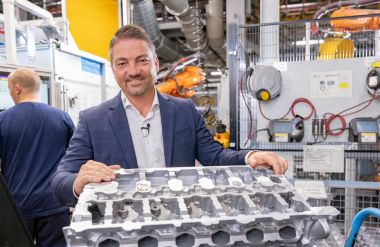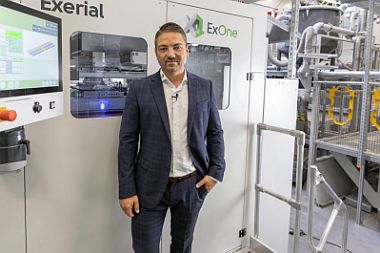Binder Jet 3D Printing Technology Helps BMW Realize its Vision of Sustainable Manufacturing in Serial Production
ExOne and BMW have worked together for over 20 years on additive manufacturing projects. Watch how the premium automaker uses ExOne binder jet sand 3D printing technology to manufacture water jacket cores in serial production.
ExOne and the BMW Group have been working together for more than two decades on project development. The automaker uses four ExOne Exerial binder jet 3D printing systems for serial production of water jacket cores used for metalcasting. When combined with a microwave, a desanding station, and a fully automated conveyor system, the complete Exerial system runs high-speed 24/7 production and delivers high-accuracy parts.
VIDEO: How BMW Group Uses ExOne Binder Jetting Technology
In the coming months, two more systems are slated to be added -- expanding the production to multiple 100,000 pieces throughout the year. As an ExOne "super fleet" customer, BMW is a true pioneer in using additive manufacturing for sustainable serial production.
Binder Jetting Technology
The technology at the core of this transformation is binder jetting -- one of the fastest 3D printing methods for producing high-quality and complex precision parts in high volume.

Eric Bader, Managing Director of ExOne, a Desktop Metal Company, stands behind a cylinder head that was produced with the help of a 6-cylinder water jacket core that was binder jet 3D printed on the ExOne Exerial system. (Photo: Business Wire)
Manufacturing with binder jetting technology comprises two main steps: A thin layer of sand is deposited in the job box before an inkjet printhead applies a binder where desired to bond the particles together. This process is repeated layer-by-layer until the form is complete.
When used for sand casting, the sand part is removed and assembled into a mold package used for casting molten metal. Binder jet 3D printing technology is widely viewed as a desirable and sustainable production method, largely because of its high speed, low waste and cost, as well as material flexibility.

Eric Bader stands in front of one of the four Exerial binder jet systems.
Importantly, BWM uses inorganic binder in its binder jet 3D printing process. This sustainable binder chemistry does not emit odors or emissions during the metalcasting process, which makes it more environmentally friendly.
With the aid of ExOne binder jet 3D printers, complex designs can be realized for casting aluminum powertrain components with ease. Moreover, what makes this technology especially suitable for BMW's serial production is its extremely high speed.
Want more information? Click below.
Rate this article
View our terms of use and privacy policy ::m::